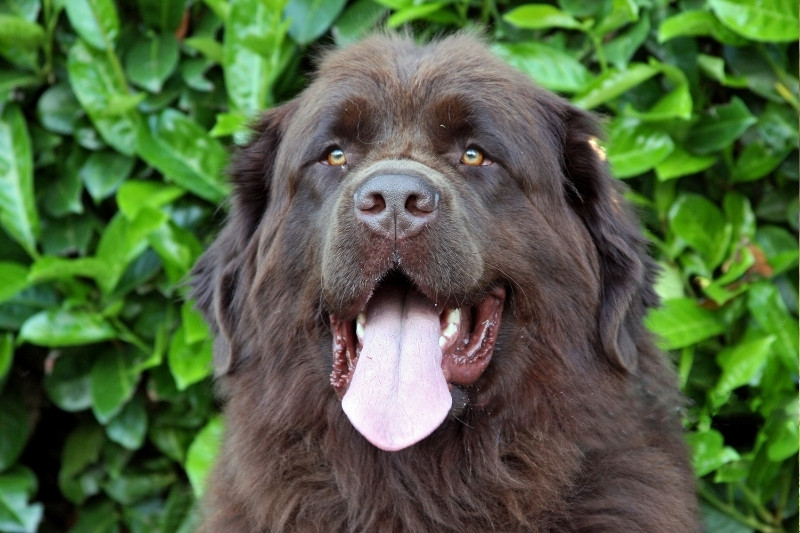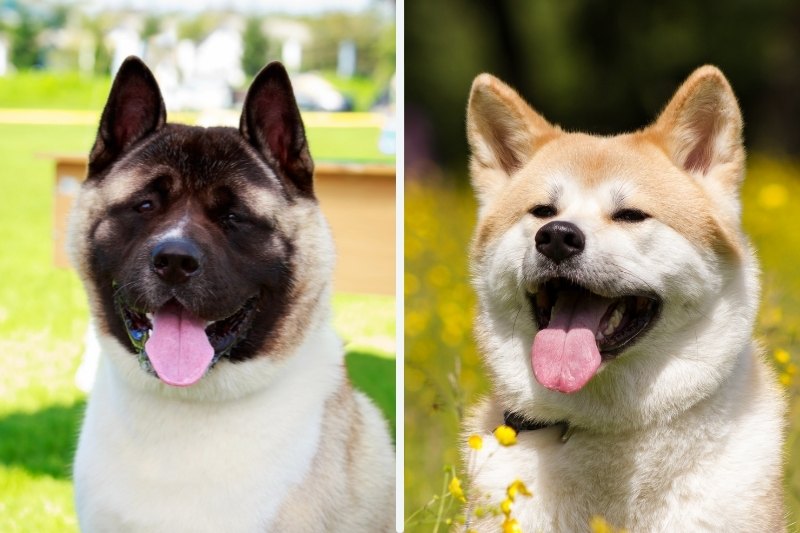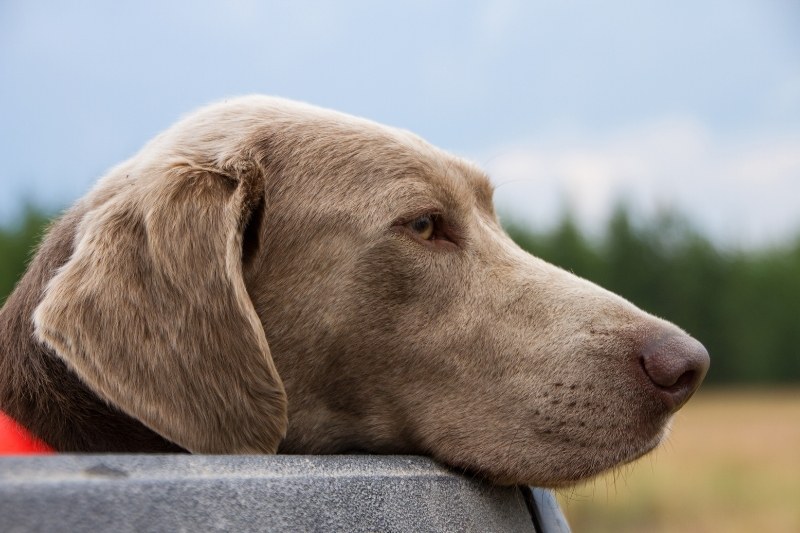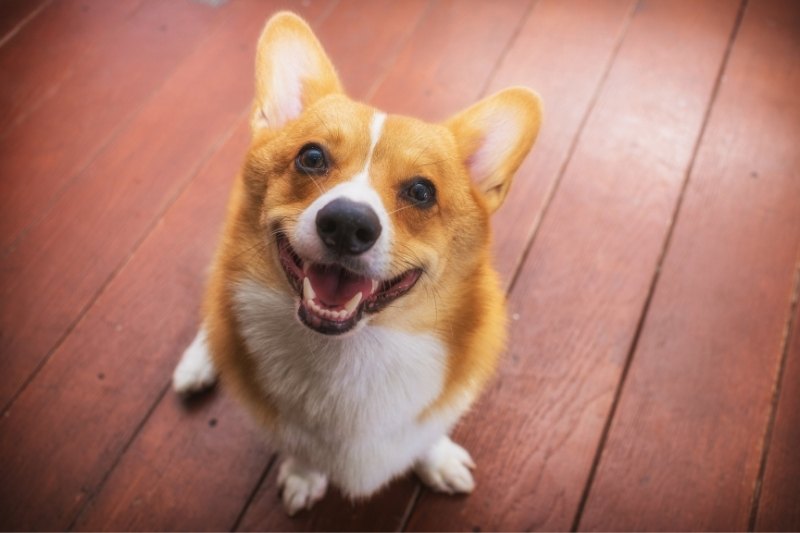All The Newfoundland Colors explained (with pictures!)

Newfoundlands are big, noble, and sweet-natured dogs. They're incredibly gentle (despite weighing up to 150 pounds!) and are very trusting of their human friends.
Easily recognizable for their impressively thick coats and inquisitive eyes, Newfoundlands really are sure to get some attention in your local dog park.
But is this dog breed always black? It's certainly the most common coat color for these gentle giants but there are actually a few Newfoundland colors.
Here are the ones accepted (and not accepted) by the various kennel clubs.
How important is color really?
Newfoundland dogs are big. Yes, they're loving, trainable, and very adoring but owning a pup that may weigh more than you comes with some extra things to consider. Newfoundlands really need to be adopted by owners who have experience with big dog breeds and who won't be overwhelmed by their size.
The health of a dog is also much more important than its coat color. It's essential you get your dog from a verified breeder who really cares about the future of the breed and the individual dog. Rarer coat colors (especially those not accepted by kennel clubs) are particularly susceptible to backyard breeding – so make sure you do your research!
How many colors do Newfoundlands have?
American Kennel Club
According to the AKC, there are four acceptable colors. These are:
- Black
- Brown
- Gray
- White and black (also known as Landseer after Sir Edwin Landseer who painted Newfoundlands)
The AKC also lists beige, black and tan, white and brown, and white and gray. These colors, however, are not in the breed standard.
Newfoundland Club of America
According to the NCA, the following colors are accepted:
- Black
- Brown
- Gray
- White and black
They also note that the color of a Newfoundland dog should not impact how much it costs and that it's secondary to the type and structure of the pup.
United Kennel Club
The UKC also accepts black, brown, gray, and white and black as standard Newfoundland dog colors. They go on to state that a black, brown, or gray coat may be solid colors or have white patches on the chin, chest, toes, and tip of the tail.
Landseer Newfoundlands normally have a black head that may or may not have a white blaze (the strip of color between the dog's eyes). They also typically have black markings on their saddle and on the base of the tail.
Newfoundland dog colors
Here are the eight Newfoundland colors according to the AKC (four in the breed standard and four not).
Black Newfoundland

Black is the most common color for Newfoundlands, and certainly one of the most striking.
Their solid black coat is usually thick, wavy, and water-resistant. They have a double coat which means you can expect a certain amount of shedding with these pups.
You'll need to give them a good brush a couple of times a week (or even daily).
Brown Newfoundland

Brown Newfoundlands are particularly beautiful – especially because they're not as common as black doggies. They have a rich, chestnut color which can be darker chocolate or a much lighter brown.
You might find lighter patches or white markings on their chest, chin, toes, or tip of the tail. Markings anywhere else on their bodies would disqualify them from competing in competitions and shows.
Gray Newfoundland
Gray is the third of the recognized Newfoundland colors and the least common.
A dog with this unique coat color is particularly striking and, when combined with its huge frame and shaggy coat, and real show stopper.
A gray Newfoundland has a diluted black coat to make it look gray. It's especially important to do your research when adopting a Newfoundland puppy of this color because they're so rare.
Black and white Newfoundland (Landseer)

Unlike the brown, black, or gray coat that may have white markings, these pups have a predominantly white coat with black patches. They often have a black saddle, rump, and head. They may also have a black head with a white blaze or small white markings on their muzzle.
Landseer Newfoundlands can have black flecks on their legs too. As with other Newfoundland dog colors, their coat is fluffy, thick, and likely to shed a lot!
Beige Newfoundland
Beige Newfoundlands look fairly similar to brown dogs.
They're not, however, exactly the same (they're not in the breed standard for a start). Beige dogs have the dilute gene and therefore have a lighter, less intense coat color.
Newfoundland puppies with this coat are particularly cute!
Black and tan Newfoundland
Do you have pictures of a Black and tan Newfoundland? Send it to us and we’ll feature you!
A black and tan Newfoundland (also considered a tri-colored Newfoundland by some) looks quite like a distant cousin of the St. Bernard.
These intelligent dogs have a black base coat with tan markings on their face, chest, legs, and tail. They may also have a couple of white patches in the same areas.
White and brown Newfoundland
White and brown is another coat color that's not accepted by the AKC. A Newfoundland dog with this coat coloring will typically have a white base coat and chocolatey patches over its body.
White and Gray Newfoundland
Do you have pictures of a White and Gray Newfoundland? Send it to us and we’ll feature you!
Similar to white and brown Newfoundlands, these dogs have a white base coat and patches of gray. Like their gray cousins, they're also pretty rare.
What about blue Newfoundland puppies?
Have you found a breeder offering blue Newfoundland dogs? If so, you should probably find a new one as blue Newfoundlands don't exist. Anyone selling blue pups will probably be offering gray Newfoundlands for more money.
Is there such a thing as a white Newfoundland dog?
Lots of Newfoundlands have white markings and Landseer pups are predominantly white. There aren't, however, any fully white Newfoundlands.
If you're after a big, white, and very fluffy dog that could (almost) pass as a white Newfoundland you might want to consider getting a Great Pyrenees, a Samoyed, or a White Swiss Shepherd dog.
What's an Irish spotted Newfoundland dog?
Unlike other dogs on the list, describing Newfoundlands as Irish spotted refers to the coat pattern rather than the coat color. These dogs are black Newfoundlands that have distinctive white markings.
Does coat color affect the price of a Newfoundland?
More common colors for Newfoundlands (black and brown) will probably cost you less than rarer ones such as gray and Landseer.
Be careful not to buy your pup from an unethical breeder or puppy mill – even if they're cheaper. You'll be contributing to the suffering of animals and will, in all likelihood, have an unhealthy pup.
Does color affect health?
As long as your dog is well-bred, it should be healthy and coat color shouldn't affect this. There are a few health issues that can affect dogs that contain the dilute gene (so beige and gray Newfoundlands).
This includes color dilution alopecia which can cause areas of your dog's coat to thin and for the skin to become red and itchy.
Does color affect the temperament of a dog?
No! Coat color won't affect the personality of your pup. If they live in a loving home with plenty of socialization and enough exercise, your Newfoundland will be sweet-natured, adoring, and very loyal – regardless of their color.
Final thoughts
Newfoundlands are amazing dogs that come in a number of different colors, not just jet black! There are four accepted by the AKC and other kennel clubs plus four more that are listed but not desirable for show. These big dogs need experienced owners and a lot of love. With that, they're sure to be the heart of any family!
I’m Charlotte, a content and copywriter from the North of England and currently living in Berlin. Animals have always been a huge part of my life, so writing about dogs is a total pleasure! I love all kinds of dogs and their cheeky personalities, but I’d have to say Weimaraners are my favourite!








